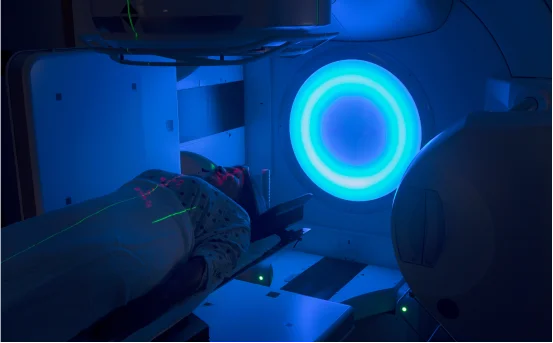Tumors affecting the brain or spinal cord are some of the most complex and sensitive conditions in medicine. These tumors can be either benign (non-cancerous) or malignant (cancerous), but regardless of type, they require careful attention because they develop in areas that control essential functions of the body.
Treating brain and spinal cord tumors involves a team of specialists and a personalized approach based on the tumor’s size, location, type, and the patient’s overall health. The goal is to remove or shrink the tumor, reduce symptoms, and preserve neurological function. Let’s explore how treatment is typically carried out step by step.
Brain and Spinal Cord Tumors Treatment Procedure
- Diagnosis and Initial Evaluation
Before treatment begins, doctors perform detailed evaluations to understand the nature of the tumor. This includes:
- Neurological exams to assess brain and spinal function
- MRI or CT scans to visualize the tumor’s size and exact location
- Biopsy, either through surgery or needle-guided techniques, to determine whether the tumor is cancerous or benign
- Blood tests, genetic testing, and sometimes a lumbar puncture (spinal tap) to check for cancer cells in the cerebrospinal fluid
Accurate diagnosis is essential for building a targeted treatment plan
- Neurological exams to assess brain and spinal function
- Surgical Removal (When Possible)
Surgery is often the first line of treatment, especially if the tumor is accessible and can be removed safely without harming surrounding brain or spinal tissue.
Brain Tumor Surgery
The most common procedure is a craniotomy, where a portion of the skull is temporarily removed to access the brain. The neurosurgeon removes as much of the tumor as possible, often guided by real-time imaging and monitoring to avoid affecting vital areas.
Spinal Cord Tumor Surgery
In spinal tumors, the surgeon may perform a laminectomy or spinal decompression to access the tumor and relieve pressure on the spinal cord or nerves. Precision is critical to avoid damage to spinal structures.
Complete removal is the ideal outcome, but in some cases, only part of the tumor can be removed (called debulking) to reduce symptoms and prepare for further treatments.
- Radiation Therapy
Radiation therapy uses high-energy beams to target and kill tumor cells. It is often used after surgery to destroy any remaining cancer cells or as a primary treatment if surgery isn’t possible.
Types of radiation therapy include:
- External Beam Radiation: The most common type, directed at the tumor from outside the body
- Stereotactic Radiosurgery (SRS): A highly focused form of radiation that treats brain tumors in a single or few sessions with pinpoint accuracy
- Proton Therapy: A newer, advanced form of radiation that minimizes damage to surrounding healthy tissue
Radiation may also be used for spinal cord tumors, especially when surgery is too risky.
- External Beam Radiation: The most common type, directed at the tumor from outside the body
- Chemotherapy
Chemotherapy involves the use of drugs to destroy or slow the growth of cancer cells. While it’s more commonly used for other types of cancer, certain brain and spinal cord tumors especially in children may respond well to chemotherapy.
It can be administered:
- Orally (in pill form)
- Through an IV (intravenous infusion)
- Directly into the cerebrospinal fluid in some cases
Chemotherapy is often used in combination with surgery and radiation, especially for aggressive or malignant tumors.
- Orally (in pill form)
- Targeted Therapy and Immunotherapy
For some tumors, especially those with specific genetic markers, targeted therapy drugs can block the growth of cancer cells without affecting normal cells. Immunotherapy is also being explored in clinical trials to help the immune system recognize and fight tumor cells more effectively.
These advanced treatments are more personalized and may offer new hope for patients with tumors that are difficult to treat using standard methods.
- Rehabilitation and Supportive Care
After treatment, patients may need rehabilitation to recover and manage side effects. This may include:
- Physical therapy to restore strength and coordination
- Speech and occupational therapy for patients with cognitive or communication challenges
- Pain management and neurological monitoring
- Counseling or psychological support to cope with emotional stress and anxiety
Supportive care is a critical part of recovery, especially when tumors affect movement, memory, or other vital functions.
- Physical therapy to restore strength and coordination
- Monitoring and Follow-Up
Regular follow-up is essential after treatment to monitor for tumor regrowth or long-term effects. This includes:
- Periodic MRI or CT scans
- Neurological exams
- Blood tests and symptom tracking
- Additional treatments if new symptoms appear
In some cases, especially with slow-growing tumors, long-term observation (also called “watchful waiting”) may be the best approach if the tumor is stable and not causing symptoms.
- Periodic MRI or CT scans
Conclusion
Treating brain and spinal cord tumors requires expertise, coordination, and a patient-centered approach. From diagnosis to recovery, every step is carefully tailored to give the best possible outcome while protecting the delicate structures of the nervous system.
While the journey may feel overwhelming at times, modern advances in neurosurgery, imaging, and cancer therapies offer real hope. With early detection, skilled care, and a strong support system, many people go on to lead fulfilling lives after treatment.























